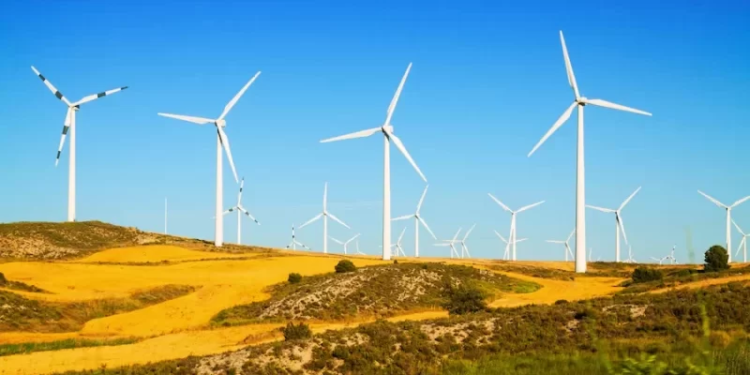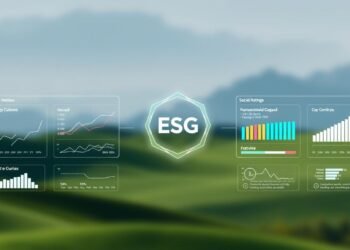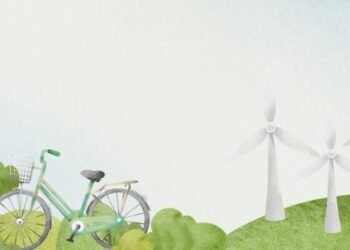How can moving air turn into usable electricity for a home, a farm, or a whole utility grid?
This buyer’s guide explains the basics of wind energy and how systems convert air motion into power. It covers small backyard setups, distributed systems on the customer side of the meter, and large offshore and land-based projects.
You will learn how blades create lift and drag to spin a rotor that drives a generator, and how choices like direct drive versus a gearbox affect efficiency, reliability, and cost.

The guide also sets expectations about site viability in the United States: resource maps, zoning, tower height, obstructions, and interconnection matter. It previews hybrids with solar and batteries, and notes incentives such as the federal tax credit that change economics.
Read on to compare types, assess feasibility, and get practical numbers so people can make informed buying decisions over the life of a project.
Key Takeaways
- Learn how airflow across blades creates electricity and what parts do the work.
- See the range of systems, from small distributed setups to utility and offshore projects.
- Understand major technology choices and their trade-offs in maintenance and cost.
- Assess site factors like resource, height, and interconnection before buying.
- Consider hybrids and policy incentives when evaluating project economics.
How a wind turbine turns wind into electricity
Rotational generators convert flowing air into usable electricity through a chain of aerodynamic and mechanical steps.
From blades to grid:
From blades to grid: blades, rotor, generator, and power output
Blades act like airplane wings: air moving over a blade lowers pressure on one side and creates lift that overcomes drag. That lift spins the rotor and turns kinetic energy into mechanical rotation.
The rotor connects to a shaft that transmits torque to a generator. Some systems use a gearbox to raise shaft speed for a smaller generator; others use direct drive to cut moving parts and maintenance. The generator produces alternating current that power electronics condition for grid interconnection or battery charging.
Lift, drag, and rotor aerodynamics that drive electricity generation
Pitch control and yaw systems optimize blade angle and orientation so the machine faces the wind and avoids overspeed. Rated capacity appears on the nameplate at specified wind speeds, but real output varies by the site’s wind speeds distribution over the hour, day, and year.
Large rotors capture more energy at lower speeds but need taller towers and stronger foundations. Control systems include brakes, cut-in and cut-out thresholds, and supervisory logic to protect equipment and maximize productive times.
Buyer tip: Review manufacturer power curves and expected annual energy production for your site. That information helps compare sizes, system integration, and likely electricity yield for your application.
Types, components, and technology choices in modern wind turbines
From large offshore units to small distributed systems, equipment options shape how much energy a project delivers.
Horizontal-axis vs. vertical-axis: fit and performance
Most large projects use horizontal-axis designs with three upwind blades and yaw control for high efficiency. Horizontal-axis machines dominate utility work because they scale well to megawatts and higher capacity factors.
Vertical-axis options are omnidirectional and can suit constrained urban or experimental sites, but they usually deliver lower conversion efficiency for the same swept area.

Key components and drivetrain choices
Blades are composite, the rotor and hub transfer loads, and the nacelle houses the generator and controls. Towers and foundations match site loads and logistics.
Direct drive cuts moving parts and often improves reliability. Gearboxes keep generators compact but add maintenance points. Buyers should weigh expected O&M and warranty terms when comparing systems.
Where wind power is used: homes, businesses, and utility-scale wind farms
Different project scales—from a single home to offshore arrays—determine how this technology is sited and used.
Distributed systems sit behind the meter at homes, farms, and community sites to supply on-site electricity and resiliency. Small installations are best where steady, unobstructed flow exists. Hybrid setups with solar and batteries smooth variability for remote microgrids.
Land-based plants group multiple wind turbines across land to deliver megawatts to the grid. These wind farms contribute low‑carbon power at scale and often require access roads, setbacks, and interconnection capacity. Landowners may receive lease payments for hosting equipment.
Offshore projects in U.S. waters use larger machines and ship logistics to tap stronger coastal breezes. Offshore arrays can supply bulk electricity to coastal utilities and expand the country’s renewable portfolio.
Community procurements, power purchase agreements, and federal programs help homes and businesses participate without on-site systems. Evaluate local permits and utility interconnection rules before moving forward.
Buyer’s checklist: is small wind right for your property in the United States?
Begin your buying process with a quick resource check to confirm if local conditions support a small system. Aim for average wind speeds of about 10–11 miles per hour at hub height, verified by NOAA maps or a short on-site measurement campaign.
Location and land
Rural parcels and open locations work best. Put the hub at least 30 feet above nearby trees or structures to cut turbulence. Suburban one-acre lots are usually unsuitable for effective performance.
Permits and interconnection
Check zoning, permitting fees, and utility interconnection steps early. Confirm metering, protective relays, and any application timeline your utility requires.
System sizing and use
Most effective residential systems run 5–15 kW. Using a ~17% capacity factor, expect roughly 5 kW ≈ 7,446 kWh/year, 10 kW ≈ 14,892 kWh/year, and 15 kW ≈ 22,338 kWh/year. Model kW capacity conservatively for your home energy use.
Grid vs hybrid
Where the grid is unavailable or unreliable, combine generation with batteries and solar to smooth output. In many locations, rooftop solar is cheaper per kWh; small wind can win when roofs are shaded or land is abundant.
Quick checklist: average resource, hub height, setbacks, modeled capacity, annual kWh, permits, interconnection steps, and schedule before requesting quotes.

Costs, incentives, and long-term economics of wind turbines
Project economics start with honest up-front costs and realistic energy estimates for your site.
Residential costs vs. solar
Small systems are often quoted at $3,000–$5,000 per kW, but full installed costs for 5–15 kW commonly reach $100,000–$175,000 after towers, foundations, permitting, interconnection, and balance‑of‑system items.
Compare that to rooftop solar at about $2.86/W (a 10 kW array ≈ $27,300 before credits). Solar often yields more annual electricity at typical homes, so model local resource and capacity carefully.
Utility-scale and offshore investment
Onshore projects budget roughly $1.3 million per megawatt. Modern 2–3 MW machines cost about $2.6–$4 million each before plant-level work. Offshore projects run higher, on the order of $1.5M per MW, with marine logistics and policy driving variation.
O&M, payback, and incentives
Plan O&M at about 1–2¢ per kWh; large units can incur $42k–$48k per year each, rising with age. The 30% federal tax credit for eligible small systems reduces net cost, and USDA programs can assist qualifying farms and businesses.
Do sensitivity analyses (best/expected/worst) on output, price, and permitting fees to estimate payback year and investment risk.
Conclusion
Deciding whether to add a small generator on your property starts with honest data about your site and goals.
Match system size to measured resource, land limits, and your annual energy needs. For homes, look for rural parcels, average wind speeds above 10–11 miles per hour, and towers at least 30 feet above obstructions.
Compare small wind vs. rooftop solar and consider a hybrid to smooth hourly and seasonal output. Model nameplate capacity into annual production with a conservative capacity factor to estimate payback and bill savings.
Do due diligence: request power curves, review rotor and blades design, confirm warranties, and get O&M estimates. Secure hub‑height data, check zoning and interconnection, and confirm incentives such as the 30% federal tax credit before committing.
FAQ
What are the main parts of a modern wind turbine and how do they work together?
A typical machine includes blades, a rotor, a nacelle housing a generator, and a tower. Blades capture airflow and transfer force to the rotor. The rotor spins the generator to make electricity, while the nacelle contains the drivetrain and controls. The tower raises the rotor to better average wind speeds, improving power output for homes, farms, and utility systems.
How does a wind turbine turn airflow into usable electricity?
Moving air creates aerodynamic forces on the blades—primarily lift and some drag. Lift causes the rotor to turn. The rotating shaft spins the generator, which converts mechanical energy into electrical energy that can feed a local system, battery, or the grid. Power depends on blade size, rotor swept area, and wind speeds at the hub height.
What’s the difference between horizontal-axis and vertical-axis machines?
Horizontal-axis models are the common three-blade design seen at utility-scale and most residential systems; they offer high efficiency and predictable performance. Vertical-axis models have a different rotor layout and can handle turbulent urban flows with simpler siting, but they usually deliver lower energy and smaller capacity suitable for specific small-system uses.
How do direct-drive systems compare with gearbox designs?
Direct-drive units connect the rotor straight to a low-speed generator, reducing moving parts and maintenance while improving reliability. Gearbox systems use a gearbox to increase generator speed, allowing smaller generators but adding wear and periodic servicing needs. Choice depends on capacity, site access, and long-term operations planning.
What are the advantages of offshore projects versus land-based plants?
Offshore locations typically enjoy higher, steadier wind speeds, enabling larger rotors and higher megawatt ratings per unit. That raises capacity and yields more electricity for utility-scale projects. However, offshore requires specialized vessels, costly foundations or floating platforms, and marine permitting, affecting project investment and timelines.
Can small turbines or hybrid systems serve remote properties effectively?
Yes. Small systems paired with batteries and sometimes solar panels form hybrid solutions for remote homes, cabins, or rural businesses. Success depends on consistent site wind speeds, proper tower height, system sizing in kW and kWh, and routine maintenance to meet demand over a year.
How do I know if my property has enough resource to justify a small system?
Start with wind maps and local averaged speeds, then use on-site measurements at the planned hub height for 6–12 months. Consider obstructions, topography, and tower height. A capacity factor estimate and expected annual kWh will show whether payback and energy goals are realistic for your location.
What permitting, zoning, and interconnection steps are required in the United States?
Requirements vary by county and utility. You’ll typically need a building permit, zoning approval for setbacks, and an interconnection agreement to send power to the grid. Early contact with local planning offices and the utility helps identify fees, inspections, and technical standards to ensure compliance.
How should I size a system to meet household energy use?
Size based on average annual consumption (kWh per year), expected wind resource, and realistic capacity factor. Compare rated kW to expected annual output. Factor in peak loads and whether you plan grid-tied operation or off-grid storage. Consulting a professional engineer or installer gives accurate kW and battery capacity recommendations.
When does a wind-focused system beat solar, and when is a hybrid better?
Wind wins where steady, strong winds exist year-round, especially in winter when solar dips. Solar outperforms in sunny, low-wind regions. A hybrid approach balances seasonal variability, increases overall system availability, and can reduce battery size by sharing generation between resources.
What are typical installed costs for residential small systems versus solar?
Small-system installed price per kW varies widely by size, tower complexity, and site access. Generally, small wind has higher per-kW upfront costs than rooftop solar but can be competitive where resource quality is excellent. Include installation, tower, wiring, and controls when comparing payback and return on investment.
How do utility-scale and offshore project costs scale with capacity?
Large projects measure investment in megawatts. Onshore plants benefit from economies of scale, lowering $ per MW as size grows. Offshore projects are costlier per MW due to marine construction, grid export cables, and foundations, but higher capacity factors can improve lifecycle economics.
What ongoing operations and maintenance should owners expect?
Routine O&M includes blade inspections, gearbox or generator servicing, control system checks, and tower integrity reviews. Costs are tracked as $/kWh or annual O&M percentages. Reliability improves with modern design, remote monitoring, and proactive replacement of wear items.
Are there federal incentives or local programs that reduce system cost?
Yes. Federal tax credits and state or local incentives can lower upfront cost. Rural programs and certain utility rebates may apply for distributed systems. Eligibility depends on system type and current policy; consult the IRS rules, state energy offices, and local utilities for up-to-date details.
What safety and siting considerations should I follow for a residential installation?
Maintain required setbacks from homes and roads, account for ice throw in cold climates, and ensure tower foundations meet local codes. Keep clear access for maintenance and choose sites with minimal turbulence and few obstructions. Professional civil and structural reviews are recommended for safe long-term operation.
How do blade size and rotor diameter affect power output?
Larger rotors sweep more area and capture more energy at given wind speeds, increasing annual output. Blade material and shape also influence performance and lifespan. Balancing rotor size with tower height and local wind profiles delivers the best energy yield for a given investment.





